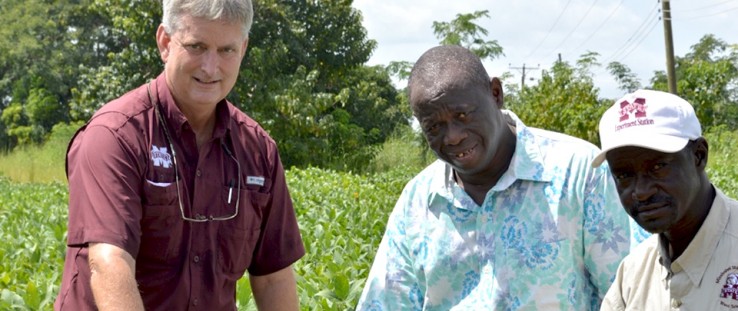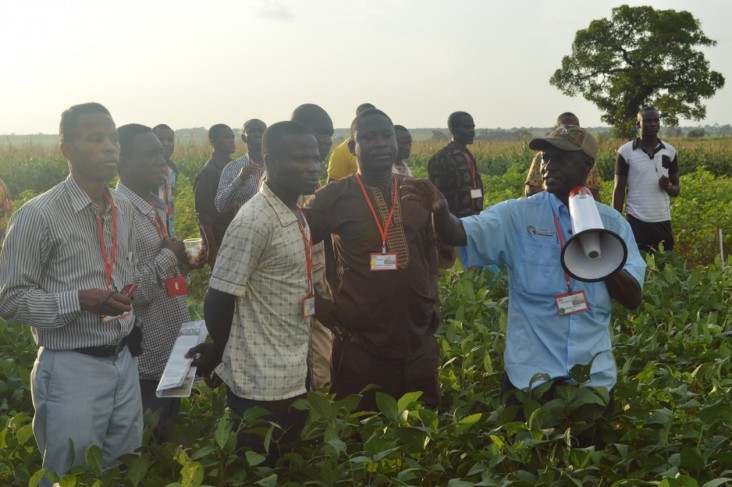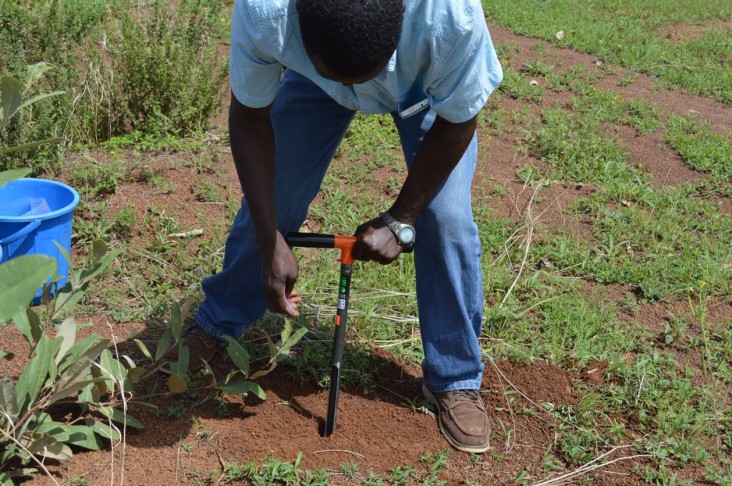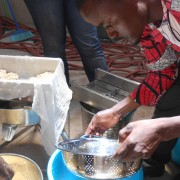 From left: Dan Reynolds, lead researcher for the Soybean Innovation Lab SMART Farm; Saaka Buah, director of the Savanna Agricultural Research Institute’s station located in Wa, Ghana; and George Awuni, SMART Farm manager.
Courtesy of George Awuni
From left: Dan Reynolds, lead researcher for the Soybean Innovation Lab SMART Farm; Saaka Buah, director of the Savanna Agricultural Research Institute’s station located in Wa, Ghana; and George Awuni, SMART Farm manager.
Courtesy of George Awuni
 From left: Dan Reynolds, lead researcher for the Soybean Innovation Lab SMART Farm; Saaka Buah, director of the Savanna Agricultural Research Institute’s station located in Wa, Ghana; and George Awuni, SMART Farm manager.
Courtesy of George Awuni
From left: Dan Reynolds, lead researcher for the Soybean Innovation Lab SMART Farm; Saaka Buah, director of the Savanna Agricultural Research Institute’s station located in Wa, Ghana; and George Awuni, SMART Farm manager.
Courtesy of George Awuni
Speeches Shim
In sub-Saharan Africa, soybeans are a profitable cash crop as well as a high-quality protein source. That is good news for operators striving to feed the growing poultry industry here and for the country’s soy oil processing facilities. Unfortunately, it’s bad news for many farmers whose soybean yields remain low, in fact, well below world averages, at the moment they could demand higher prices for the now in-demand crop.
George Awuni, a post-doctoral research associate at Mississippi State University and manager of the SMART Farm, is working to change those smallholder farmers’ fortunes. Awuni, 53, is a native of Ghana and grew up in the Upper East Region. He has known hunger and understands the difficulties smallholder farmers in Ghana face.
“While pursuing my studies and working with the agriculture ministry in Ghana, it occurred to me that poverty reduction and the transformation of livelihoods in developing countries can only be achieved by a concerted effort of all stakeholders in the agricultural sector, both national and international,” Awuni said. “Through this project, I have the opportunity to make a difference in the lives of my countrymen.”
The SMART Farm is unique in that smallholder farmers receive guidance and information that they can readily apply to their production practices to improve their soybean yields. Higher soybean yield increases smallholder farmer productivity and, in turn, raises incomes, reduces malnutrition and promotes economic development.
The SMART Farm is part of the Feed the Future Innovation Lab for Soybean Value Chain Research, or SIL (Soybean Innovation Lab), for short. SMART stands for Soybean Management with Appropriate Research and Technology. The lab, led by the University of Illinois, is part of a network of U.S. universities working with USAID to help solve problems of food insecurity throughout the world. Feed the Future is the U.S. Government’s global hunger and food security initiative led by USAID.
The SIL SMART Farm began four years ago. It provides recommendations to improve soybean yields for smallholder farmers, and generates best management practices for seed and row spacing, planting dates, fertilizer and pesticide application rates, inoculum use and the best soybean varieties for the region. The SMART Farm operates in collaboration with the Savanna Agricultural Research Institute (SARI), a center within the Ghanaian National Agricultural Research System. They’re located in three locations in northern Ghana: Nyankpala in the Northern Region, Manga in the Upper East Region and Bawku in the Upper West Region. These regional locations enable the SMART farm to gather data for millions of smallholder farmers in northern Ghana.
The goal of reducing malnutrition fueled the introduction of soybeans to sub-Saharan Africa in the 1970s. Soybeans—high in protein, key amino acids, vitamins and minerals—complemented the starchy dominant staples such as maize, cassava and millet, which were nutritionally poor. The strategy involved introducing a crop that women could grow, harvest and process to improve their families’ health. Now soybean demand has grown significantly. Women have new opportunities to not only improve nutrition in the household, but also to sell their crops in the marketplace. High-yielding varieties and advanced agronomic practices should lead to more productive women farmers, improved nutrition and reduced poverty.
Awuni left Ghana in 2010 to pursue his Ph.D. in entomology at Mississippi State University’s Department of Plant and Soil Sciences with the hope of returning to put his degree to work in his home country. Today, his development research and associated outreach activities are bringing critical knowledge the region needs to grow soybeans.
“George is an exceptional researcher and I knew this project would be a great opportunity for him. As a native of Ghana, George provides an incredible opportunity for the university to have seamless credibility and a direct connection with the Ghanaian people,” said Dan Reynolds, who leads the Soybean Innovation Lab’s research at the SMART Farm and is a professor and Edgar E. and Winifred B. Hartwig Endowed Chair in Soybean Agronomy at Mississippi State. Reynolds works with Awuni on the research conducted at the SMART Farm in northern Ghana.
Awuni spends six months of the year in Ghana at the SMART Farm working to generate critical data to improve soybean yields in the region. That includes overseeing trials, testing new varieties, monitoring soil health and looking for ways to reduce weeds—and the need for the chemicals that control them.
Science Meets Soybeans
The research Reynolds and Awuni conducted has shown that, when combining appropriate agronomic practices, soybean yields using locally available varieties can be increased over 2.5 times what farmers commonly experience in northern Ghana.
Awuni says the next step is to get this information into the hands of the farmers.
“Soybean yields from farmers’ fields are less than 1,000 kilos a hectare, and if research tells us that we can increase yields to over 2,000 kilos or more a hectare, that means we should be able to extend that into the farmers’ fields,” said Awuni.
The SMART Farm provides an ideal training center on soybean agronomics for practitioners from countries in West Africa due to its regional location and support from SARI.
Awuni conducts numerous outreach trainings at the SMART Farm on soybean agronomic and production practices for government and non-governmental agencies. The SIL Soybean Kick-off Event, held annually at SARI, provides another venue to share the findings of the SMART Farm with the regional agricultural community. The event brings together smallholder farmers, the private sector, researchers, development organizations, agricultural extension agencies and government ministries to learn about the innovation, knowledge and technologies generated by the SMART Farm to improve soybean production in Ghana.
The Soybean Innovation Lab plans to establish similar SMART Farm hubs in Eastern and Southern Africa to improve agricultural techniques and innovations in these regions as part of its pan-African strategy to increase soybean productivity across the continent.
“Expanding the SMART Farm to other African countries will have multiple benefits for smallholder farmers. Farmers’ yields will increase with the introduction of new seed varieties and using improved agronomic practices. With higher yields, farmers will have new income, will increase utilization and, as a result, nutrition will be improved,” said Awuni.
Dan Boomgarden is with the Soybean Innovation Lab.





Comment
Make a general inquiry or suggest an improvement.